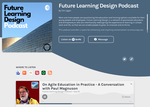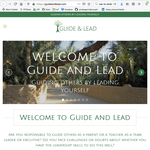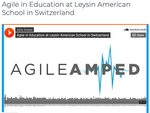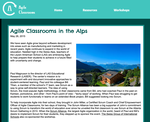Pulling Agile into Education
Agility is an umbrella term for a number of working practices. In essence, agility seeks productivity and timeliness through regular feedback - and the ongoing adjustments that the feedback suggests - in short iterations of work. The parallel with education is straightforward. Good instruction makes regular use of feedback so that students, working in short cycles, are constantly refining and improving their thinking and work.
On Agile Education in Practice - A Conversation with Paul Magnuson
Paul Magnuson attributes his progressive views on education to over twenty years of experience working in summer camps. He’s done with command and control models that tend to favor conformity and compliance over self-regulation, whether it be for students or teachers.
Webinar Agility by Tim Logan
As part of the ECIS Leadership Conference - April 2020, Guide and Lead Managing Partner, Tim Logan gives an overview of the importance of agility in building schools as life-affirming 21st century organisations.
Educators gather in Switzerland to evolve Agile Learning for future students Educators gather in Switzerland to evolve Agile Learning for future students
Scrum Alliance®, a global professional membership and certification association representing Scrum and Agile practitioners who are …
Agile in Education: Bill Tihen and Paul Magnuson of Leysin American School
Principles to cultivate engaged, collaborative and self-regulated students. A video Interview by Scrum Alliance.
Agile in Education at Leysin American School
Principles to empower students, make learning visible and to create lifelong learners. An audio interview by Howard Sublett of AgileAmped Podcast.
Agile Classrooms in the Alps
LAS began planning in 2014-2015 for the opening of a middle school (grades 7 and 8) in Fall 2016. Twenty-five educators attended John’s Agile Classroom Workshop.
Climate Sensor Poles
To understand plant ecology, one needs to know the exact temperature that plants are actually growing in, rather than regional averages. Our efforts to make this widely available to citizen scientists and espescially schools.






